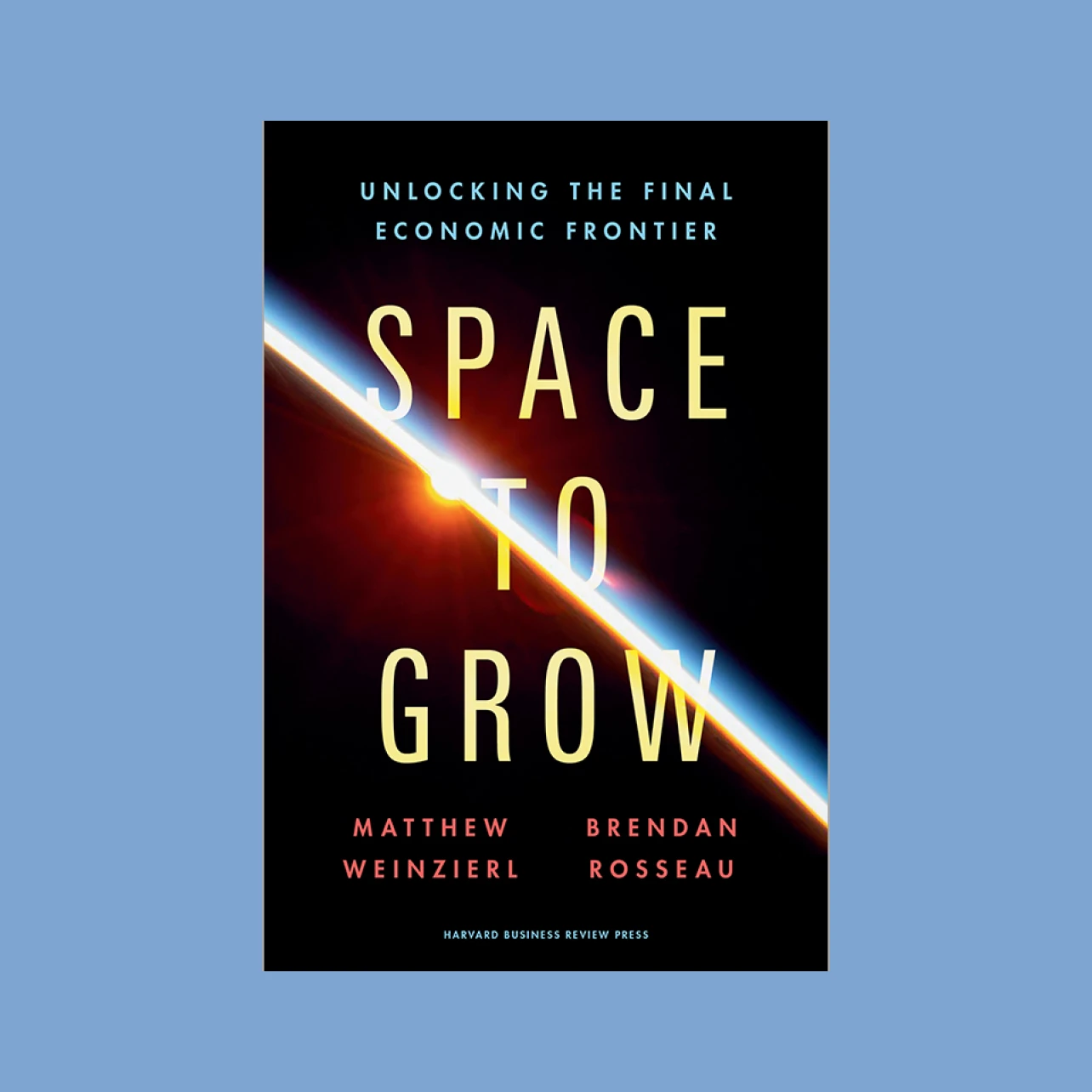This excerpt was adapted from the book Space To Grow: Unlocking the Final Economic Frontier by Matthew Weinzierl and Brendan Rosseau, released in February 2025.
We believe that the space renaissance is just getting started. Thousands of new satellites are now launched each year, deepening the value space provides for us back on Earth. SpaceX’s Starship, commercial space stations, NASA’s new moonshot, and more promise to further expand our domain of activity.
Government agencies have embraced their role of working with the hundreds of companies, from startups to established players acting like them, that continue to generate ideas and technologies to make the industry more dynamic, more capable, and more successful.
A growing number of companies across industries, as well as governments, nonprofits, and other organizations, are leveraging the expanding array of products and services made possible through space technologies. Day by day, in ways big and small, the space revolution marches forward.
We believe that with this opportunity comes the responsibility—for all of us, as a society—to make the most of this unique moment.
What comes next? The truth is, we can’t say for sure. As the space sector becomes more market-based, its future is increasingly determined not by some central authority but by the decentralized knowledge spread throughout the sector. The thing about markets—what makes them powerful and, to economists, beautiful—is that they thrive on and empower this decentralized knowledge. Markets work because they bring together the unique knowledge and ideas that reside in each of us, as individuals, including you.
Though no one can say for sure what will happen next, we know a few things with certainty. As the next chapter of the story is written, there will be disappointments; the history of space efforts is full of them. There will also be surprises; the rapid rise of the commercial space sector surprised many, even longtime space leaders. Most important (and the reason for this book), there will be opportunity as the commercial sector increasingly drives what’s possible in space and who can benefit.
We believe that with this opportunity comes the responsibility—for all of us, as a society—to make the most of this unique moment.
We have this responsibility in part for economic reasons. Economic growth rates in modern democracies have been declining for half a century. Data suggests that entrepreneurship, productivity, and innovation seem to be slowing, that economically transformative ideas are becoming more resource-intensive to generate, and that demographics (including falling fertility rates) are likely to hold back demand. If we want to turn these trends around, we will need to make big, game-changing investments.
Economists largely agree that one of the best options for doing so is through large-scale public funding in capital-intensive, innovative areas designed to jump-start private investment and generate lasting productivity growth. Familiar targets include infrastructure, the energy transition, and artificial intelligence, but large-scale investments in space have unique potential.
As we continue to push the boundaries, new and unexpected capabilities will emerge that will redefine business, life, and society.
Rockets will become more affordable, more capable, and more numerous and will redefine what’s possible in orbit and beyond. Satellites will capture human activity in ever-greater detail and transmit vast quantities of information around the globe at the speed of light. Space habitats will, eventually, house people and new technologies at scale. As we continue to push the boundaries, new and unexpected capabilities will emerge that will redefine business, life, and society.
There is room for these investments. Despite all the excitement and dynamism in the space sector, its funding still pales in comparison with that of other terrestrial industries. Today, NASA’s share of the federal budget is an order of magnitude lower than its peak during Apollo. And space today presents immeasurably more opportunities—for science, technology, economic prosperity, and national security—than it did then. The momentum behind US space efforts may have faltered after Apollo, and America’s approach to space may have struggled to evolve until it faced a crisis, but now that change has come, it’s our opportunity and responsibility to invest for the future only space can make possible.
On any frontier, uncertainty is everywhere. That’s a defining characteristic of a frontier, and part of its allure. Generations of space visionaries have dreamed of developing this frontier to improve lives and enrich the human experience. The commercial space revolution, though still in its infancy, has already significantly expanded what’s possible and, as a result, the value space can provide for humanity. Today we have new hopes, and perhaps even a credible path, of bringing grand visions of space activities—and their associated benefits—into reality.
But within the commercial revolution unfolding today, there exists an opportunity beyond simply fulfilling the visions of those who came before us. That opportunity lies in the unknown and the yet unknowable. With market forces taking hold in space, new ideas will form and entrepreneurs will bring them to life. New technologies will spark new value, which will in turn spark new opportunities for further technologies and the value they will unlock, and so on.
Many of the inventions that have come to define the first wave of the revolution—low-cost, reusable, frequent rocket launches; interconnected, smarter, nimbler satellites; foundational technologies to enable research and habitation in orbit and on the lunar surface; and much more—can be viewed as infrastructure. These are the fundamental elements that must be developed to unlock further applications and higher-order activities.
These are, in a sense, the lowest rungs on a ladder. Our ascent up this ladder has already been transformative. In the model of central government control, space activities accomplished wonders and developed capabilities, like satellite communications and GPS, that underpin much of modern life. With the introduction of market forces in the past couple of decades, the forces of competition, innovation, and efficiency are transforming the space sector. New technologies are being developed, many of which are increasingly relevant to a wider range of actors across business, government, and beyond.
Inherent to this climb is the opportunity for new growth, in every sense of the word.
Our ascent up the ladder has quickened, and each rung is unlocking new sources of value. Inherent to this climb is the opportunity for new growth, in every sense of the word. Growth for businesses of all stripes and for our economies. Growth of our technologies and industries. Growth of science, of our understanding of our planet and the universe we inhabit. And growth with respect to our most cherished principles: the pursuit of progress, knowledge, and prosperity; the pursuit of justice, equality, and the rule of law; the pursuit of understanding, peace, and cooperation.
But the commercial space revolution is young. Our climb has only just begun. This generation—its technologists and engineers, businesspeople and policy makers, scientists and students and educators, and all others who make up the expanding group of space professionals—is collectively reaching for the next rung up the ladder. There will certainly be stumbles along the way: delays, distractions, and disappointments that impede progress. But what seems certain is that the climb will continue, and it will continue to inspire much of what is best in us.
Reprinted by permission of Harvard Business Review Press. Adapted from Space to Grow: Unlocking the Final Economic Frontier by Matthew Weinzierl and Brendan Rosseau. Copyright 2025 Matthew Weinzierl and Brendan Rosseau. All rights reserved.


